
James Pearson has climbed Neil Gresham's route Lexicon (E11 7a) at Pavey Ark, Langdale. James's was the fifth ascent after repeats from Steve McClure, Dave MacLeod and Mat Wright. The route shares some climbing with Impact Day (E8 6c) but has an independent start and finish.
James arrived at the crag last Monday with long-time climbing partner Keith Bradbury, who abseiled down the route and suggested he try a flash attempt. James quickly followed, using the ab to brush and feel the holds, check out the options for gear and measure body positions.
Throughout the day, James climbed up and down Impact Day, attuning himself to the style of climbing on the wall, before leading up and downclimbing the start of Lexicon. Intense heat meant conditions were less than ideal, and midges ended play at around 9 p.m.
Conditions were much better the following day and after a further abseil inspection which included adjusting tick marks and deciding on whether to try Neil or Steve's sequence, James prepared for a lead attempt. On Instagram, he wrote:
'Unfortunately, I messed up the sequence of the first boulder problem, spending way too much time and energy on the tiny crimps and despite a good fight on the moves above, I fell off about a little lower than where Steve falls in the video clip.'
On his third lead attempt at the headwall - starting from the halfway break - James managed to piece together a sequence and latch the finishing jug. James told UKC:
"I ended up coming up with a bit of a hybrid method between what I've seen Neil, Steve and Dave using. But luckily, the rock's really cool with hundreds of little tiny holds and it seems like even though there are various different methods that you can use, it all comes back to around about the same difficulty. So I ended up using a slightly different hold to Dave and Neil, maybe it's a hold that Steve used. I'm not sure because I haven't actually seen a video of him up there, but I'm going by what Neil was saying."
James and wife Caroline Ciavaldini were in the Lakes for his sister's wedding on Saturday and were due to help with preparations on Friday. Having lent a hand in the morning and with the weather looking uncertain but not a write-off, James was kindly encouraged by his family to head back up to Pavey Ark. James said:
"Suddenly at about 2 p.m. it was back on again. The weather still looked kind of iffy. I thought there was a big chance that we'd walk up there again and just get rained on, but decided that if you don't try it then you'll never know. I didn't have a belayer as Neil was busy that day, but luckily Caro said that she could do it and my mum, sister and her bridesmaids offered to take care of the kids for us. Neil also dropped off a rope as I'd forgotten mine, and he brought a harness for Caro. There was just a beautiful team effort, everybody really pulling together to try and just give me a chance to get out there."
At 4 p.m., the pair arrived at the crag to high winds and a wet lower half of the route. Facing a shortage of time, James had to abandon his initial warm-up plan of climbing to the break, down-climbing and stripping the pieces of gear that would add drag to the route, as Neil had done.
Instead, James climbed on two ropes to avoid having to downclimb or face rope-drag, dropping the rope used on the first half at the break — Dave MacLeod's method. He explained:
"There was absolutely no way I could have downclimbed that wet section...it was nails enough just getting through it on the way up there. Talking to Neil the day after, I'm glad I didn't know how short those those knifeblade pegs are on that wall. I thought those two pegs were bomber, but Neil told me they're not even the size of one knuckle and one of them had recently broken and just been replaced.
"I made it up to the middle of the break with wet hands and wet feet and it was blowing a hooley and I didn't think it would work, but sometimes I think the best way for me is just to have no expectations. It was like that on Tribe [9a/9a+ trad line, UKC News] and I think it really helped on this one too."
James placed six pieces of gear in the break, more than Neil, Steve or Dave. Unlike Dave, James didn't place gear partway up the headwall.
He struggled with numb fingers from overgripping in the cold wind on the wet holds lower down. He commented:
"At that point, I guess that's when experience of years of hard drive just kicks in. There's no point getting scared. You know that the holds are good. You know that you can do the moves, even if you can't feel anything. It's still going to work, just pull really hard."
Just minutes after topping out, it started raining.
On the quality and difficulty of the route, James said:
"I've not done every single hard trad route in England, but it's the best and most fun hard trad route that I've been on here. Rhapsody's [E11 7a] also really fun to climb, the line's not as good and the climbing is in no way pure like on Lexicon. But the fact that Rhapsody's fall has pretty much zero consequences just means it's more of an easy experience to go for, so you can enjoy it a little bit more.
"On Lexicon, I thought the fall was safe enough and I thought I could probably fall off from either the very top or very close to the top and probably be fine. But I definitely wouldn't jump off the top like I jumped off the top of Rhapsody. I think it's quite on the line between everything being OK and everything not being OK and whilst I don't really think you'd injure yourself massively on it, even breaking an ankle which is a genuine possibility would just be miserable. It'd be a full on rescue."
James summed up:
"It's by no means a death route, but you shouldn't underestimate its danger. Just because I managed to climb it without top-roping it or without really practising it doesn't mean that I think it was 100% safe."
He described the unusual nature of Lexicon as a route of two halves:
"It's my favourite style of trad, where it's not really a trad route because you place all of the gear in a relatively easy section of climbing in comparison to the head wall. On Lexicon, the lower wall feels kind of like an approach hike to the meat of the route. But when you do get there you've got such good gear now — it definitely seems like it's cleaned up a little bit from when Neil climbed it, but I guess that's just the nature of climbing on mountain routes.
"You've got nothing else to think about when climbing to the top of the wall. There's no awkward stopping mid-sequence trying to fiddle in something small, or getting scared because you're a bit pumped. You just focus on the climbing and you run it out a really long way."
James praised Neil's effort in finding and establishing the line:
"I just can't get over how no one had really spotted it before. It came down to the vision of Neil to really open that thing up. Now I've climbed on it, it doesn't surprise me in the slightest that it's already been repeated so many times, because it's a very, very hard route which clearly is still very approachable and such a fun line with such a cool sequence."
He even rescued a sheep on the walk down. James said:
"On the way down it was stuck on a ledge, I felt a bit like Dave Birkett. It was the full Lakes experience: bad weather, bad conditions, trying really, really hard pulling on some tiny crimps and rescuing the sheep."
***
James posted on Instagram about attempting to flash the line, which prompted a discussion of what constitutes a flash ascent. Prior to his flash attempt, he had abbed down the line and felt the holds and placed gear, but not practised any moves. He explained his approach:
"I had this idea that it was flashable by somebody just after watching the video of Neil because it's a relatively simple route logistically since you don't have to worry about the gear. The run-out to me looked far but justifiable given how far Steve fell. The holds seemed like they might be very weird, but holds on that wall are quite positive even if they're small from my experience on Impact Day. But I really didn't think I'd have the time or the fitness to go for it in that style at this point, so I came over just with the intention of headpointing."
But when Keith abbed down the line, he reckoned James should try to flash it. He continued:
"I abbed down to look at it and realised that it was perhaps something that I could do by pretty much knowing what all the holds felt like already. I'd be the first to admit that I'm pushing even my definition of 'flash'. To me a flash is not an onsight; it's when you climb a route without pre-practising the moves, but you have all the other information that you'd get. So yeah, my definition might not necessarily align with other people's and if at the end of the day, people don't want to call that 'flash', it's really no skin off my nose.
"What I wanted to do was try it in a way that was going to push me a bit further than headpointing would and I don't want this to sound arrogant — there's always a possibility that you don't do the route, especially in the Lakes with the weather — but I really felt like it's something that I could have headpointed relatively quickly. Yet doing it without pre-practise was something I wasn't quite sure about. If I hadn't abbed down it and looked at the holds then I really don't think that I would have had time to do it. It's definitely possible to ground-up it and I think someone who's really strong could flash it without any sort of pre-inspection. It's still totally possible. If you've got a 9a flash level and you're trying to flash 8b+, you've got tons of margin for taking the holds wrong. I don't! So I needed to be as as well-prepared as I could be without actually really preparing anything, if that makes any sense. At the end of the day, I had so much fun doing it like that, which to me is kind of the whole point."
On the definition of 'flash', he summed up:
"The thing that seems clearest to me is that no one really knows what it actually means. Or maybe there is some need to clarify the styles. But ultimately the problem seems to lie in attempting to put very fixed terms on a huge spectrum of possibilities. You're just asking for trouble. You could try and invent terms for all different types of styles. But at the end of the day, I don't really know if it's important, or just it's just fun to go try these things in a way that's going to push you and be totally honest about it."



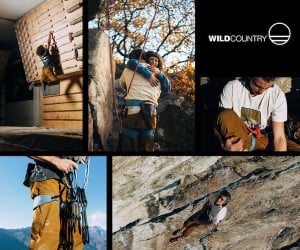



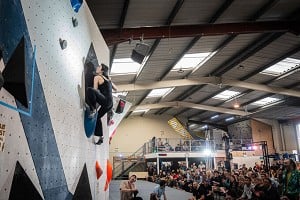
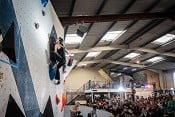

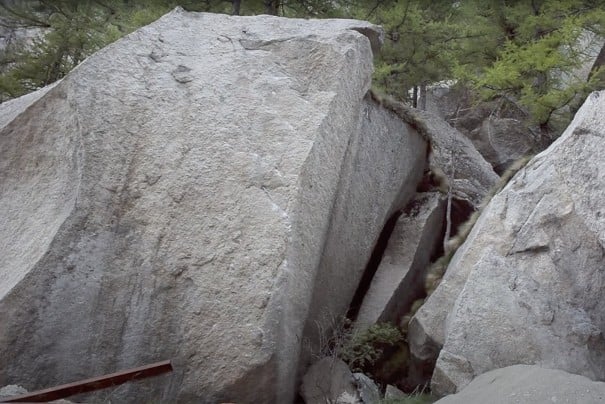
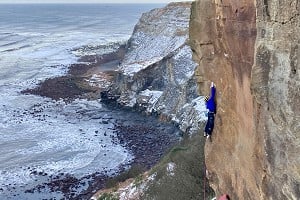


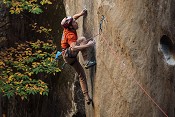
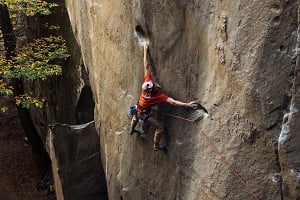
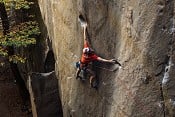
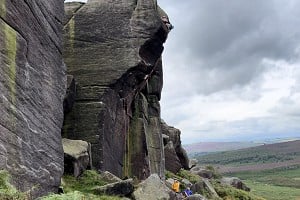
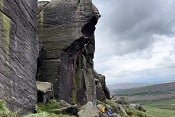
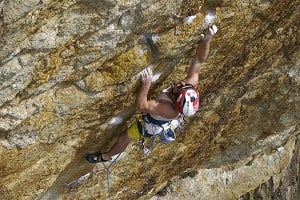
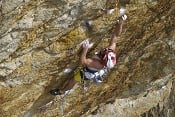

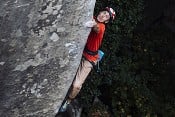

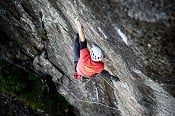

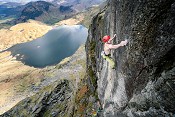
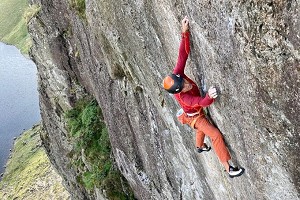
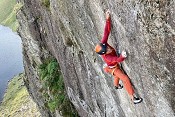
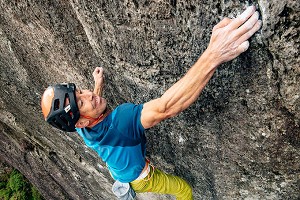
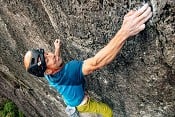
Comments
A fine effort, but that really would've been stretching the definition of flash past breaking point. Climbers will sometimes say "first go after abseil inspection", but understandably leave the word 'flash' well out of it. Once you start feeling the holds and looking at the moves, even if you aren't actually doing them, some (many?) would regard this as the light end of headpointing. Ultimately it becomes a grey area, whereas if you just say stay off the rope (yes, obviously some routes you have to ab in for!) it preserves the integrity of the style a bit more.
I applaud James wanting to increase the challenge for the fun of it, but if that's the ultimate reason, there's surely no need to try and shoehorn in certain style tags.
“I abbed down it, felt all the holds, ticked it up and then had a quick headpoint” - doesn’t sound quite as impressive as - “I tried to flash an E11”. One gets you more clicks than the other.
Nick, perhaps you could clarify one point. After the initial attempt, did he then resort to top-rope practice, further abseil inspection or just keep trying to lead it?
Because forgive me if I've misread but it isn't made clear. Which seems rather weird because the difference would mean either just another quick repeat of the country's most popular hard route, or potentially a new high watermark for non-headpointed British trad.
Chapeau either way of course, but a rather bigger hat would be needed for the latter.
He didn't top-rope, just made "ground-up" lead attempts on the top half from the halfway break.
This seems to have been lost a bit in all the fuss about the definition of a flash - my reading is that on his first day he got to the top from the mid height break after taking the fall twice and with no top roping/practice beyond the ab inspection, and on the second day he did it without any further practice. In fact the says:
"It's by no means a death route, but you shouldn't underestimate its danger. Just because I managed to climb it without top-roping it or without really practising it doesn't mean that I think it was 100% safe"
Agree that from this understanding it's a bloody impressive achievement and worth more recognition than just the flash/not flash stuff.